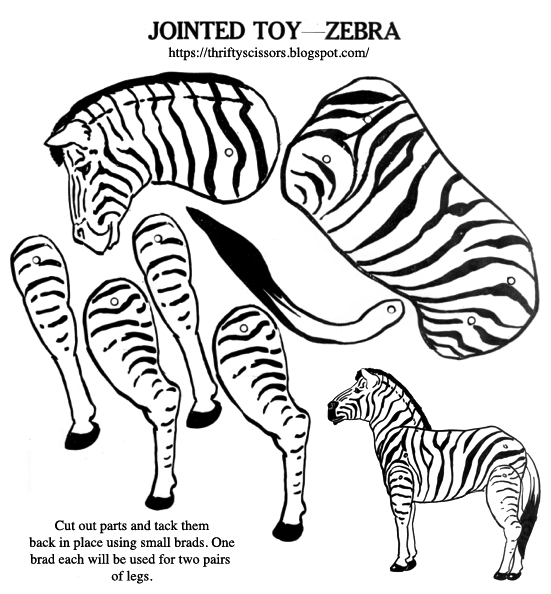The zebra is a wild animal of South Africa, closely related to the wild ass and the horse, and having habits similar to those of the latter. It is grayish or cream-white in color, and is conspicuously marked with dark stripes on head, legs and body.
In Africa zebra-hunting was once a popular sport. Native people once ate the flesh of zebras and used their hides for leather and as rugs. Until recent times great herds of zebras were common in Southern Africa; today the animals are rare. The zebra most frequently seen in Africa and in menageries.
Learn More About Zebras From The Web:
- Habitat loss and competition with livestock threaten plains zebras
- 17 Things You Didn't Know About Zebras
 |
| A paper jointed zebra toy for students to print, cut and assemble. |








